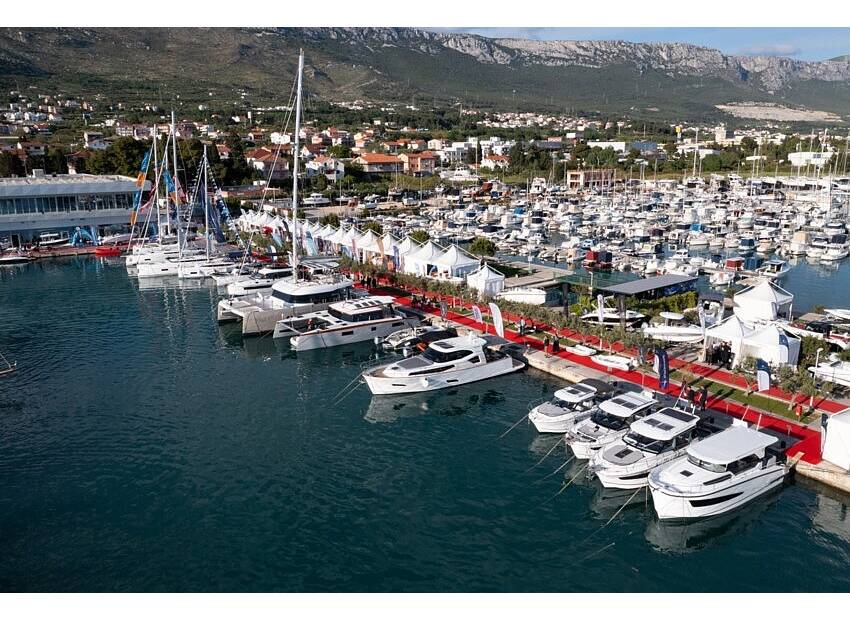The forecast calls for rising wind and rough seas.
Have you prepared your sailing crew or partner...
with the tools and techniques they will need...
to keep them aboard your boat safe and sound?
What now, skipper?
~~~~~~~~~~~~~~~~~~~~
Take these ten steps to avoid an overboard emergency.
Not many phrases on earth chill the blood as much as the scream of "Man Overboard"! on a pitch black night, in howling winds and towering seas. Put these ten top tips into effect aboard your small cruising sailboat to avoid this nightmare.
What's the #1 fear of both professional and recreational sailors? Falling overboard tops the list time and again when sailors were asked this question. Add to that the difficulty of alongside recovery. Sailboats and powerboats both have high freeboard. That's the distance from the water to the deck anywhere along the hull.
Freeboard can be two feet or more at the lowest spot on some sailboats. And that's a lot of distance for a short-handed crew to pull a heavy person into a cockpit from the water. Recovery might take place at the stern, but this can also be the most dangerous place imaginable (more on this later).
Look at most any book or magazine that shows recovery of a person from the water. Check out the background and look at the sea state. It's a good bet you'll see flat seas and the boat will be level with next to no rolling or pitching. But that's highly unrealistic, and here's why...
Folks often go overboard in less than ideal weather. Rare indeed were those calls we received in the US Coast Guard for vessels or persons in distress in calm, placid weather.
If you go overboard in any kind of seaway, you can count on recovery as being the most dangerous part of the evolution--that is--if you can be found (the human head in a seaway will be almost invisible).
Once alongside, the boat will roll and pitch. Seas will lift and drop the hull as she lies beam to the wind (stationary recovery position). Stern recovery can be even more hazardous in severe weather. Scooped reverse transoms or boats with swim platforms can create a "sledgehammer" effect as the stern rises and falls.
At all costs, stay aboard. Use the list below to begin your thought process to meet this goal aboard your own small cruising sailboat. Print it off; email it to your friends; add to it. But by all means, carry it aboard your sailboat. Share it with your sailing crew or partner.
1. Don life jackets (PFDs).
All crew on deck after sunset or during blustery weather should wear a personal flotation device (PFD). Equip PFDs with waterproof lights and whistles on lanyards. Cover the outside of the jackets with long, wide strips of reflective tape. If you fall overboard, a spotlight will pick up this tape long before the crew sees your face and body.
2. Rig jacklines.
Jacklines are long lengths of line, webbing, or wire rope run from bow to stern. Th e crew in a safety harness (see next) clips to the jackline to move about the boat without fear of falling overboard. Run your jackline from the largest bow cleats to stout fittings aft . These might be quarter cleats, Genoa track slides, or deck pad-eyes with backing plates. Do not use the weak eyes found on the inboard side of stanchion bases.
3. Wear safety harnesses (with dual tethers).
Safety harnesses must be worn by any crewmember working on deck at night or in heavy weather. Put on the harness before coming on deck from below. When moving forward and aft , always clip onto the windward jackline.
Harnesses need two tethers so the crew remains attached even when going around the mast or other obstructions. Clip the lead tether before you unclip the trailing tether.
4. Engine test and familiarization.
All hands need to know how to start the engine and use the throttle, shifter, and fuel stop. Let each person use the shifter--moving from forward to neutral, to reverse, and back to neutral.
5. Rig swim ladders.
Unfold collapsible swim ladders. Set up strong lashings to hold the ladder on both sides of the boat in the recovery area. That way, no matter which side becomes the recovery side, you will be ready ahead of time.
6. Throwable device.
Tie 150 feet of polypropylene line to a throwable device (or use the LifeSling®--see MOB recovery under sail later in this newsletter)--such as a life ring--and secure the bitter end to the rail. Attach and test a waterproof light and whistle to the gear.
7. Extra life jackets.
Place several life jackets in port and starboard cockpit lockers and near the steering station. Place extras near the helm. The life jacket is the most important throwable device aboard. If the victim enters the water without a life jacket, he or she might quickly succumb to hypothermia. Show all crewmembers the special technique for donning a life jacket in the water (see "Related Articles" below).
8. Tow a grab line.
Stream at least 150 feet of bright orange or yellow polypropylene line astern. (Sometime earlier in the season, make up a large 3- to 4-foot eye splice in the bitter end of this line. Stow the line near the wheel or tiller.)
9. Half inflate the inflatable.
If you carry an inflatable, partially inflate it. Tie at least 100 feet of line to the towing eye. Your inflatable could make the perfect platform to recover a person who falls overboard. Low freeboard, high stability, and multiple flotation chambers make an ideal rescue device. Partial inflation lowers the dinghy freeboard to make it easier for the person to climb aboard.
10. Mount a handheld GPS near the helm.
Install a bracket for a handheld GPS near the helm. Keep spare batteries in a waterproof container nearby. Brief the crew on how to activate the MOB (man-overboard) function on the GPS receiver to record your precise position at the time of the accident.
Use these ten sailing tips to make your coastal or offshore cruising safer than ever before. Keep your sailing crew safe and sound--and aboard the boat in all weathers--wherever in the world you choose to cruise!
Crouch when moving fore and aft, crawl when conditions warrant, grab and hold, then move...
-- Captain John,
from 'Seamanship Secrets'
Get instant access to 400+ sailing articles, videos, live discussion forums, and free ebooks! Click here to find out more!
Captain John
Photo: Richard Bennett






















